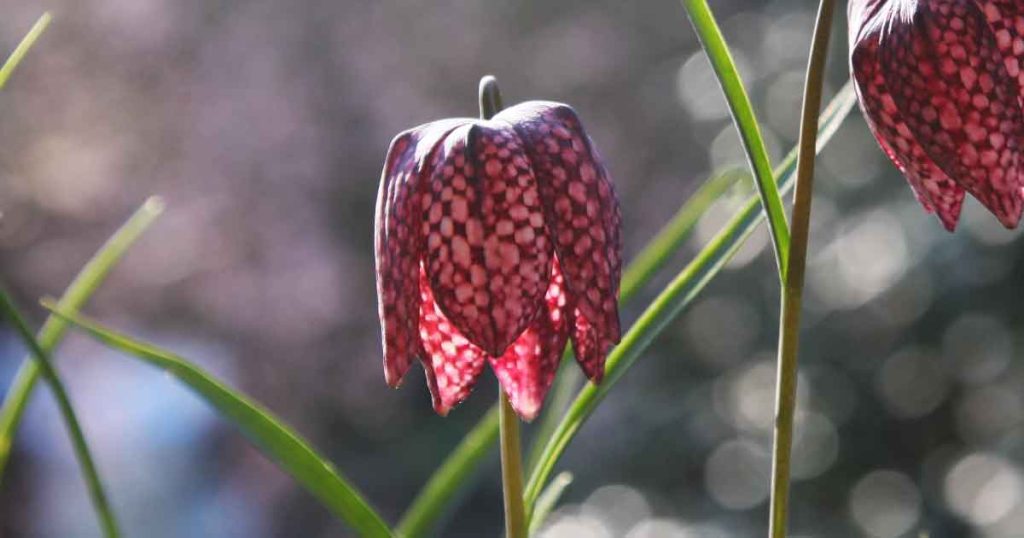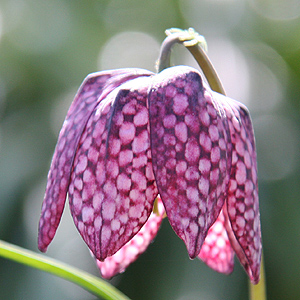
With its checkered flowers, Fritillaria meleagris is commonly called the ‘Snakes Head Fritillary’. It is a native of many countries in Europe including, France, Romania and Croatia.
This is a medium growing species and with its distinctive checkered flower head is a popular garden plant.
This is a species from Europe through to Asia, it has a few common names including Snakes Head Frittilaria, Chess Flower and Guinea Hen flower.
The botanical name comes from a combination of Numida meleagris which is the Helmet Guinea Fowl and Fritillus which is the Roman (Latin) Dice Box.
Naturally growing in damp soils although with good drainage, Fritillary meleagris is suited to areas with winter sun and summer dappled shade.

Growing to 30cm Fritillaria meleagris comes in a few forms including pinks, pale yellow and the white flowering Fritillaria meleagris alba.
Like most other species, Fritillaria meleagris requires a well drained position to avoid bulb rot, and can be successfully grown in a container or pot.
How to Grow Fritillaria meleagris
Again good drainage is the key to growing Fritillaria meleagris, so we are looking for that combination of humus rich deep soil, but free draining.
Planting depth is important, the bulbs do not like to dry out over summer, so plant at least 4 inches (10cm) deep. In hotter drier climates a little deeper.
A humus rich damp soil is best, so add extra compost if needed.
You can grow F.meleagris in pots however you do need a deep pot and you do need to make sure the soil does not completely dry over summer.
Like most other species, F. meleagris requires a well drained position to avoid bulb rot, and can be successfully grown in a container or pot.
Planting
Like most bulbs they look great in clumps. We like 7 – 10 in a group, and unevenly spaced for a more ‘natural’ look.
They grow equally well in the rock garden and in a well drained container in full sun to part shade in summer. Well suited to USDA Zones 3 – 8.
YOU MAY ALSO LIKE

